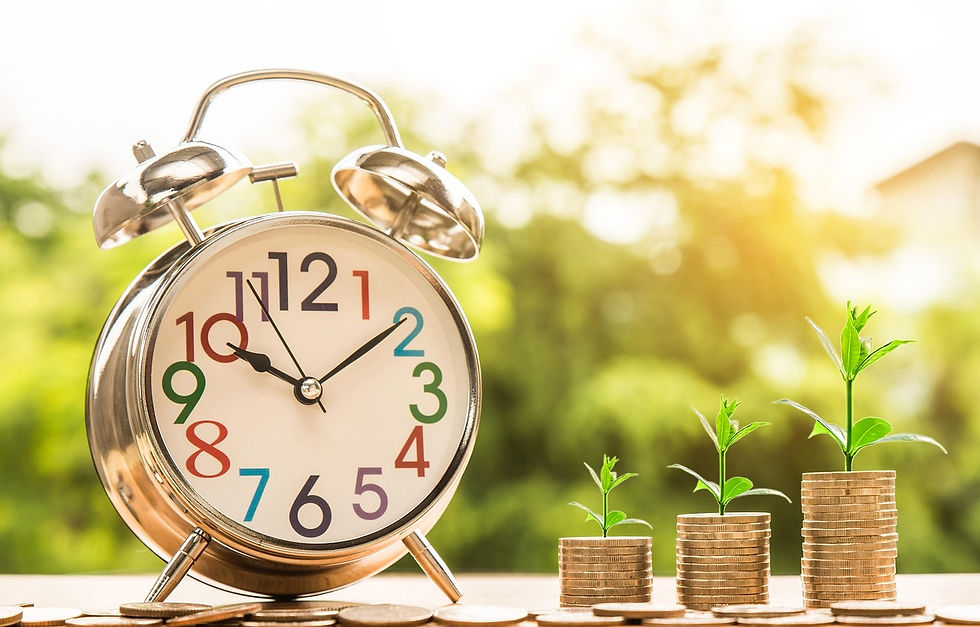Flat Rate VAT – What Is It, How Does It Work, and Is It Right for You?
- emma-bbs
- 12 minutes ago
- 4 min read

VAT – three little letters that strike fear into the hearts of business owners everywhere. The rules can feel as twisty as a country lane, and just when you think you’ve got it straight, you find another bend. But there’s one route that can make the journey a bit smoother – the VAT Flat Rate Scheme (FRS).
If you’ve ever wondered what it is, how it works, and whether you can dip in and out, let’s walk through it together.
What is the Flat Rate VAT Scheme?
The Flat Rate Scheme is HMRC’s attempt to simplify VAT for small businesses. Instead of tracking the VAT you charge customers and the VAT you reclaim on purchases, you simply pay HMRC a fixed percentage of your total gross sales (including VAT). The exact percentage you pay depends on your industry sector. For example, a graphic designer pays a different rate to a café owner.
How Does It Work?
Let’s say you run a small photography business. Your industry’s flat rate is 11%.
You invoice a client £1,200 + £240 VAT = £1,440 in total.
Under the standard scheme, you’d track the VAT you’ve charged (£240), deduct VAT you’ve paid on expenses, and pay the difference.
Under the Flat Rate Scheme, you just take your gross sales (£1,440) and apply your flat rate percentage (11%).
£1,440 × 11% = £158.40 – that’s what you pay HMRC.
In this example, you keep the difference between the VAT you charged and what you owe HMRC – but remember, you can’t reclaim VAT on most purchases (with the exception of some capital assets over £2,000).
The Benefits of Flat Rate VAT
Simplicity – Less record-keeping and fewer calculations.
Predictability – You know exactly what percentage to apply each time.
Possible financial advantage – If your expenses are low, you could pay less to HMRC than you would under standard VAT accounting.
2% first-year discount – For your first 12 months in the scheme, your percentage rate is reduced by 2%.
The Drawbacks
Limited VAT reclaim – You generally can’t claim VAT on purchases, except for qualifying capital assets.
Sector-specific rates – Your flat rate might be higher than you expect for your industry.
Limited cost trader rule – If your costs are below certain thresholds, you may have to apply a higher rate of 16.5%.
Not always cheaper – For businesses with high VATable costs, the standard scheme could be better financially.
The Rules and Restrictions
Turnover limits – You can only join the scheme if your VAT taxable turnover is £150,000 or less (excluding VAT).
Leaving the scheme – You must leave if your turnover goes over £230,000 (including VAT).
Industry classification – Choosing the correct flat rate percentage is essential – HMRC will expect you to justify your category.
Limited cost trader – If you spend less than 2% of your turnover on goods (not services), you’ll be put on the 16.5% rate.
Can You Chop and Change?
Yes – you can leave the scheme if it’s no longer beneficial, but HMRC prefers you to stick with your choice for at least 12 months. Re-joining later is possible, but only if you meet the eligibility criteria again.
Switching between the Flat Rate and Standard schemes can happen, but it’s not something to do lightly – there’s paperwork, possible VAT adjustments, and you need to think about the timing to avoid extra admin headaches.
Flat Rate VAT vs Standard VAT
Feature | Flat Rate Scheme | Standard VAT Scheme |
Admin level | Low – one percentage on total sales | Higher – track VAT in and out |
VAT reclaim | Generally no (except capital assets > £2,000) | Yes – on all allowable purchases |
Sector-specific rates | Yes | No |
Best for | Low-cost businesses wanting simplicity | Businesses with high VATable costs |
First-year discount | Yes – 2% off | No |
Worked Examples – When Flat Rate Wins and When It Doesn’t
Example 1 – Flat Rate is Cheaper
Turnover: £50,000 + £10,000 VAT = £60,000 gross sales
Industry rate: 12% (10% in first year with discount)
VAT payable: £60,000 × 10% = £6,000
VAT charged to customers: £10,000
VAT kept: £4,000
If you have very low VATable costs, you might keep more using Flat Rate than you would under Standard VAT.
Example 2 – Standard VAT is Cheaper
Turnover: £50,000 + £10,000 VAT = £60,000 gross sales
Industry rate: 12%
VAT payable under Flat Rate: £60,000 × 12% = £7,200
VAT charged to customers: £10,000
VAT reclaimable under Standard VAT: £6,000 (due to high cost of stock/equipment)
Net VAT payable under Standard VAT: £10,000 – £6,000 = £4,000
Result: Standard VAT saves £3,200 compared to Flat Rate in this scenario (£7,200 – £4,000).
Final Thoughts
The Flat Rate Scheme can be a brilliant tool for small businesses, especially those with low expenses and a dislike for overcomplicated spreadsheets. But it’s not a one-size-fits-all solution. For some, the simplicity outweighs the loss of VAT reclaims; for others, the maths just doesn’t work out in their favour.
The key is to weigh up the numbers for your business – think about your costs, your sector’s rate, and whether you prefer time saved or money saved. And remember: once you pick your VAT route, it’s worth sticking with it for a while to see how it truly works for you.



Comments